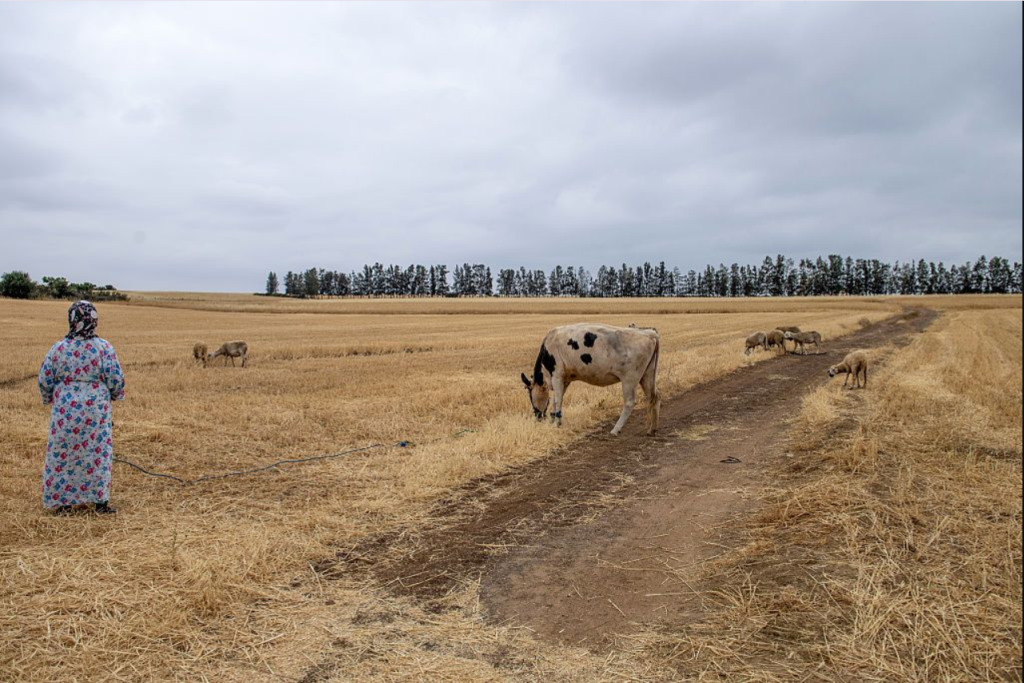Wetter, hotter, and more unpredictable weather is set to wreak havoc on our food systems, but scientists are devising ways to mitigate the coming harm
Climate change is set to radically change farming practices. Rising temperatures will alter what crops can be grown where, shifting rainfall patterns might bring drought to some regions and floods to others, and warmer, wetter weather is expected to arrive with more pests and disease in tow.
Scientists are already hard at work figuring out which crops will be strongest in the face of our changing climate and developing new varietals that can withstand changing temperatures.
Here are some hybrid foods that will help keep the food system functioning as weather gets more extreme.
Bioengineered broccoli

No matter whether you like how it tastes or not, broccoli is a hugely popular vegetable, and one that could get harder to grow.
The vast majority of broccoli is grown in California, but it requires cool nights and temperate weather. Researchers at Cornell developed a new varietal called Northstar, which was made to thrive in colder places like New York, New England, and Quebec. It’s meant to allow broccoli to grow in more diverse climates, especially as California is expected to suffer from more extreme heat, wildfires, and drought.
A new perennial: Kernza

Kernza, a wheat-like perennial crop, was bred in 2019 for the first time. This cereal crop, developed from intermediate wheatgrass, is meant to be a substitute for wheat when and if it fails to grow amid climate change.
The scientists who developed Kernza say it can “offer resilience to extreme weather like drought,” reduce soil erosion, absorb almost 100% more nitrate pollution than corn and soy, and allow farmers to make fewer tractor passes, which in turn saves on emissions.
“Growers immediately understand the benefits of perennials on their landscapes,” Tessa Peters, director of crop stewardship at the Land Institute which developed the grain, told The Guardian. “And for those working in grain-producing areas, Kernza is very appealing.”
Carbon-reducing plants

As scientists dream up new crops to resist climate change, researchers at the Salk Institute in San Diego are trying to figure out how plants can play a part in reducing our emissions.
Salk is working to increase plants’ carbon sequestration ability, trying to modify them to grow longer roots, which would in turn allow them to suck more carbon out of the soil. They do this by engineering roots with more suborn, a polymer that can capture carbon. This keeps carbon dioxide in the ground and prevents it from being released into the atmosphere.
The Salk Institute also said the heftier roots that keep more carbon in the ground create better drought tolerance and keep the soil healthier.
A supercharged sweet potato

Sweet potatoes are nothing new, but researchers at the International Potato Center (CIP) have developed a biofortified one that “grows abundantly, is tolerant to drought and disease, and comes packed full of micronutrients necessary for growth and development,” according to The Gates Foundation. Even better, the sweet potato grows quickly and doesn’t need much water. It is also fortified with Vitamin A since deficiencies of the nutrient can lead to diarrhea and even blindness among kids.
The potato is already being eaten across 10 million households in Africa, and its reach is expected to grow.
Turning to taro

Taro is far from new. The tropical root vegetable has been a staple of diets in parts of Africa, Asia, and Oceania for thousands of years. But it’s finding new life in the U.S.
Right now, taro can’t survive the cold winters in much of the U.S., but as temperatures get hotter and people tinker with varietals, some farmers think they’ll be able to grow it in the American South.
“We want to introduce taro because we truly believe that that will give us a more secure food system,” Chris Smith, founder of the Utopian Seed Project in North Carolina, told The Guardian.
Smith is growing a slew of different varietals in North Carolina and trying to encourage locals to learn to cook with taro. “These crops are just foods that are embedded in cultures around the world in a way that they’re not embedded here,” Smith said. “It takes work to build that community and desire for that crop.”
Source link : View Article
Author
-

Ben Kesslen is a freelance journalist with bylines in The New York Times, New York Magazine, NBC News, Slate, MIT Technology Review, and The Nation. They live in Queens, NY.



